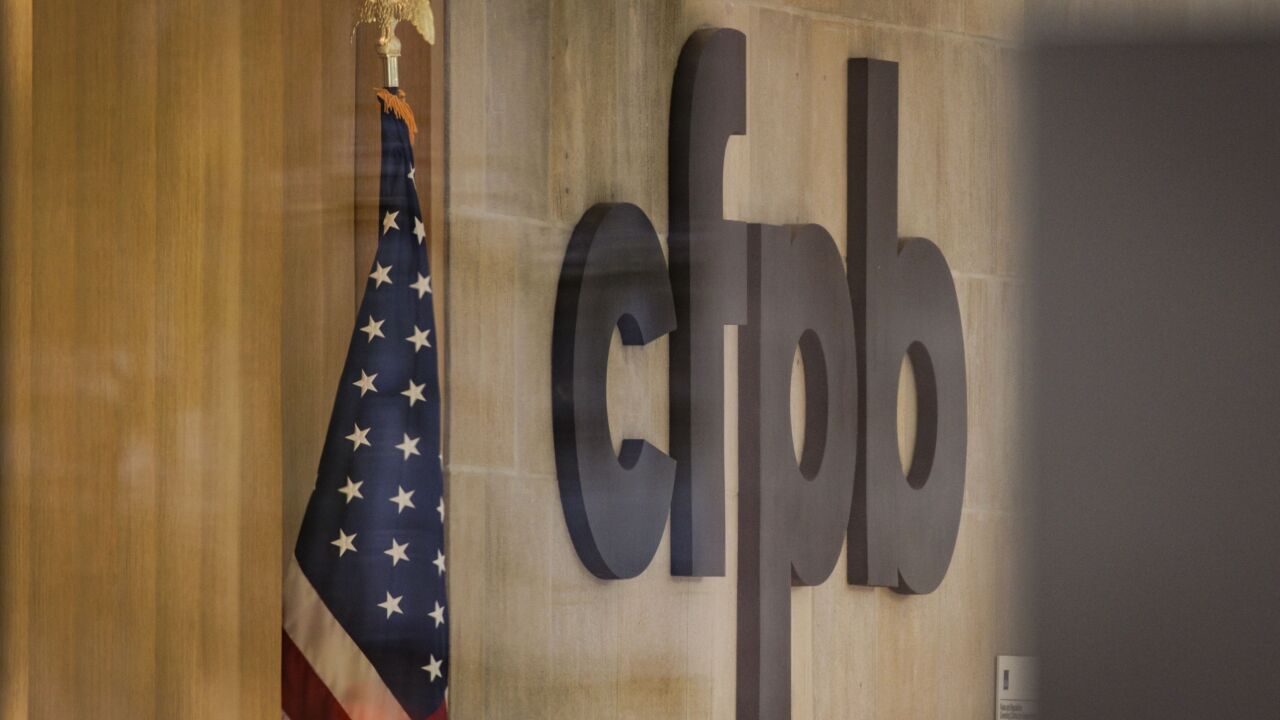As banks continue to look at ways to increase benefits for their employees while growing their business, bank-owned life insurance, better known as BOLI, has certainly gained traction. However, BOLI is not always fully understood, and many find they lack key insights into what role BOLI can fill for a bank and what they should keep in mind when looking for a BOLI carrier. American Banker Contributing Editor Danielle Fugazy sat down with Michael Dunn, CLU, ChFC®, Head of Institutional Life Insurance for MassMutual, and *David Shoemaker, CPA/PFS, CFP®, Managing Consultant with NFP Executive Benefits, to talk about the benefits of BOLI today. What follows is an excerpted version of that conversation.
American Banker: What is BOLI and why is it relevant?
Shoemaker: BOLI is an acronym for Bank-Owned Life Insurance, where the bank is the owner and beneficiary of permanent life insurance policies on highly compensated employees, officers, and directors of the bank. It’s relevant because the investment earnings are often used by banks to help offset the rising costs of employee benefit plans. BOLI has been highly regarded as a bank asset for many years because it is stable, low risk, and tax efficient.
Dunn: First and foremost, BOLI is a life insurance product, so at its heart it’s a risk management tool. They’re insuring the bank against the loss of lives of these folks that are integral to the bank's success. But as David mentioned, BOLI is also a very tax efficient tool to informally fund benefits such as non-qualified deferred comp plans or post-retirement medical care plans.
American Banker: Can you get into more detail about the benefits of BOLI?
Shoemaker: The most common reason cited by bankers for purchasing BOLI is that it provides competitive returns with very high credit quality. BOLI is an asset that accumulates on a tax-deferred basis and when held until the death of the insured, the earnings are tax free. Another thing that bankers find attractive about BOLI is that it doesn’t have what’s called mark-to-market risk. By that I mean it’s always carried at cash surrender value, and, unlike bonds, does not have market value adjustments. This favorable accounting treatment, along with steady earnings and competitive returns, makes BOLI a very attractive asset for banks.
Dunn: Banks operate in a highly regulated environment and one of the results of that is they are pretty limited in what they’re permitted to invest in. BOLI is a permitted asset that banks are allowed by their regulators to purchase. There are limitations on how much the banks can purchase, but one of the great benefits about general account BOLI is that in purchasing that product from a carrier like MassMutual, the bank is able to put an asset on their books with an attractive rate of return and also obtain indirect exposure to all of the assets inside MassMutual’s general investment account, many of which are investments that banks are not permitted to directly invest in on their own.
American Banker: What is going on in executive benefits right now and how does BOLI fit in?
Shoemaker: To start out with, competition for talent is fierce in the banking industry. Everyone wants to hire and retain the best talent. In order to do that, banks have found that traditional benefits are not necessarily enough. Non-qualified plans have proven to be very effective in helping banks recruit and retain talented people. Two values in particular that these plans provide are that, first, you can customize the plan design to fit the individual, avoiding the “one size fits all” approach. Second, within the benefit agreements you can put forfeiture language that says, ‘if you compete with us, all these benefits we’re accumulating for you will be forfeited’.
Dunn: When a bank is offering a certain benefit plan to executives, they are required to carry those benefits on their balance sheet as a liability. Then, once they actually start paying out, it becomes a cash outflow. Banks have the option of choosing not to fund that liability or they could choose to fund it with life insurance like BOLI. The great thing about actually funding the benefit liability is that it allows the bank to recover the costs of the benefits being paid to the executives.
American Banker: Why is BOLI gaining even more interest today?
Shoemaker: Banks are currently at an all-time high in liquidity. Large amounts of deposits have come in the door, but loans are not growing as quickly as they have in the past. So, they have high liquidity with interest rates so low that alternative investment options are often not attractive. The BOLI returns can provide additional earnings to the bank to help offset and recover employee benefit expenses.
American Banker: How do you approach a bank and determine what their BOLI needs are?
Shoemaker: Oftentimes I get referrals from clients, or I might get a call because of a presentation that was made and something the bank heard made them want to learn more. When I’m talking to a bank, the first thing I do is review their financial statements and ratios and try to understand the bank and think about what issues they might be concerned about. And when I have discussions with the bank, I learn more about what their concerns are and, based on experience with hundreds of other banks, consider different alternatives for them. It’s typically a long discussion, but it’s the best way to understand the client and find a way to custom-tailor something that will accomplish their goals.
Dunn: MassMutual has been in the BOLI market for over 30 years, and we’re very selective about who we allow to market and have access to selling our BOLI products in the marketplace. A fair amount of our BOLI sales in a given year are from repeat buyers. One of the key things an advisor such as David helps banks understand is that BOLI is a long-term asset purchase decision. Many benefit programs on banks’ books as a liability are long-term in nature, and banks want to have assets that can match those obligations over time..
American Banker: What are the risk management concerns?
Shoemaker: We help our bank clients prepare an annual risk assessment review that evaluates different BOLI risk factors and are happy to, at any time, meet with the board and review this information with them. Similarly, for banks buying new BOLI, we help the bank prepare a pre-purchase analysis that documents the purchase pursuant to applicable regulatory guidance.
American Banker: What are the regulatory issues that have to be considered?
Dunn: When a company is buying life insurance on its employees, it has to comply with state insurable interest laws as well as a federal law called IRC Section 101(j). Compliance with tax laws and regulatory guidance are critical components of any BOLI purchase.
American Banker: How do BOLI yields compare to bank eligible alternative assets?
Shoemaker: As we speak, most bank eligible investments are earning between .15% and 1%, whereas BOLI tax equivalent yields are generally between 2.5% and 3.8%. As a result, there’s a wider than normal spread, which makes BOLI an even more attractive asset for banks to own. Current returns, coupled with banks’ high liquidity and lower than normal loan demand, have contributed to BOLI purchases this year being nearly triple what they were this time a year ago.
American Banker: David, what attributes of insurance carriers do you look for to provide BOLI products?
Shoemaker: When deciding which carriers to work with, I look for companies that are strong financially, have experience in the BOLI marketplace, have competitive BOLI products, a commitment to the market, solid past performance, as well as general reputation in the marketplace. The bottom line is I want to work with carriers that I believe will treat our clients fairly and equitably and have demonstrated that over the years.
American Banker: Mike, what are you looking for in an advisor to sell the BOLI product?
Dunn: Our belief is that it’s important for a bank to have a relationship with a qualified BOLI advisor or advisory firm, a firm that has the appropriate back-office capabilities and support to be able to provide all the servicing that banks require around owning BOLI, a lot of which has to do with providing accounting and reporting, also helping assist with processing of death claims as they arise. We don’t provide access to every producer or life insurance salesperson who approaches us about selling our BOLI solutions. Owning BOLI is a long-term commitment and the executives who are being insured have lengthy careers. You quite often see the BOLI coverage lasting beyond their careers. Banks need advisors whose practices focus on BOLI and who are committed to the market over the long-term.
*David Shoemaker is a registered representatives with Kestra Investment Services, LLC.
Insurance services provided through NFP Executive Benefits, LLC. (NFP EB), a subsidiary of NFP Corp. (NFP). Doing business in California as NFP Executive Benefits & Insurance Agency, LLC. (License #OH86767). Securities offered through Kestra Investment Services, LLC, member FINRA/SIPC. Kestra Investment Services, LLC is not affiliated with NFP or NFP EB.
Investor Disclosures:
The information provided is not written or intended as specific tax or legal advice. MassMutual, its subsidiaries, employees and representatives are not authorized to give tax or legal advice. Individuals are encouraged to seek advice from their own tax or legal counsel.
Bank Owned Life Insurance products issued by Massachusetts Mutual Life Insurance Company (MassMutual), Springfield, MA 01111-0001.
CRN202309-284115






